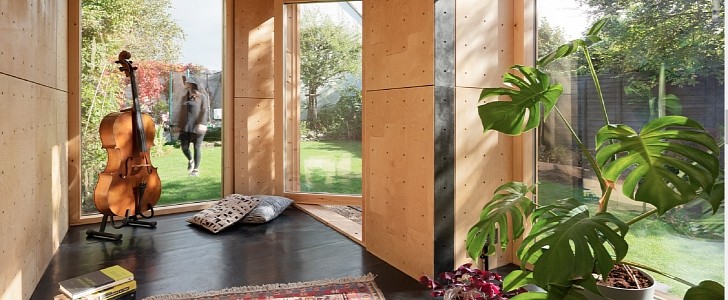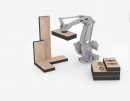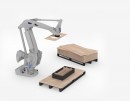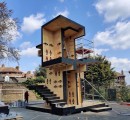As much as some of us despise the idea of robots taking over our jobs, it is already happening and you can see examples of it in every industry. AUAR aims to diffuse automation into communities, creating sustainable dwelling solutions with both the help of technology and humans.
AUAR stands for Automated Architecture and it is a British company that claims to provide the world’s first robotically assembled dwellings. Its modular system uses building blocks that are made from timber and prefabricated by robots. These machines put together the timber sheets, building individual blocks that are then delivered to the customer’s desired location and assembled into a dwelling unit. As for the human input, AUAR says it works with local communities of workers who assemble the blocks into actual houses, thus creating jobs and “empowering communities to take back power.”
Three sizes are available for AUAR’s dwelling units: small, for those between 10 to 15 sq m (approximately 107 to 160 sq ft), medium, measuring between 15 to 25 sq m (160 to 270 sq ft), and large, for units between 25 to 50 sq m (160 to 538 sq ft).
Small dwelling units start at £15,000 (a bit over $20,000) and go as high as £22,500 ($30,000). If you opt for the largest model, you can expect to pay between £37,500 and £75,000 ($50,000 and $101,000).
One other great thing about AUAR’s robot-made dwelling units is that they can be customized according to the client’s needs, preferences, and desired location. For instance, the company built a dwelling unit for musicians in Bristol, U.K, which is 10 sq m (107 sq ft) and is used as an office and rehearsal studio. The building comes with both acoustic and thermal insulation and it fits into the customer’s backyard. Despite its small dimensions, the structure is well connected with its surroundings and seems really spacious. It lets plenty of light in thanks to its skylight and large, floor-to-ceiling windows.
As for the materials, AUAR strives to use only the ones with a low carbon footprint, such as recyclable synthetic roof (EPDM), a rubber floor, paper cellulose insulation.
AUAR boasts of being backed up by a team of specialists with more than 15 years of experience in design, architecture, robotics, and computer science.
Three sizes are available for AUAR’s dwelling units: small, for those between 10 to 15 sq m (approximately 107 to 160 sq ft), medium, measuring between 15 to 25 sq m (160 to 270 sq ft), and large, for units between 25 to 50 sq m (160 to 538 sq ft).
Small dwelling units start at £15,000 (a bit over $20,000) and go as high as £22,500 ($30,000). If you opt for the largest model, you can expect to pay between £37,500 and £75,000 ($50,000 and $101,000).
One other great thing about AUAR’s robot-made dwelling units is that they can be customized according to the client’s needs, preferences, and desired location. For instance, the company built a dwelling unit for musicians in Bristol, U.K, which is 10 sq m (107 sq ft) and is used as an office and rehearsal studio. The building comes with both acoustic and thermal insulation and it fits into the customer’s backyard. Despite its small dimensions, the structure is well connected with its surroundings and seems really spacious. It lets plenty of light in thanks to its skylight and large, floor-to-ceiling windows.
As for the materials, AUAR strives to use only the ones with a low carbon footprint, such as recyclable synthetic roof (EPDM), a rubber floor, paper cellulose insulation.
AUAR boasts of being backed up by a team of specialists with more than 15 years of experience in design, architecture, robotics, and computer science.







